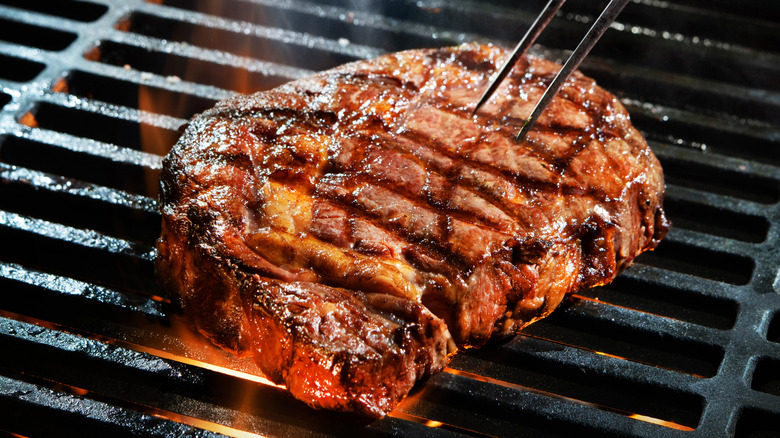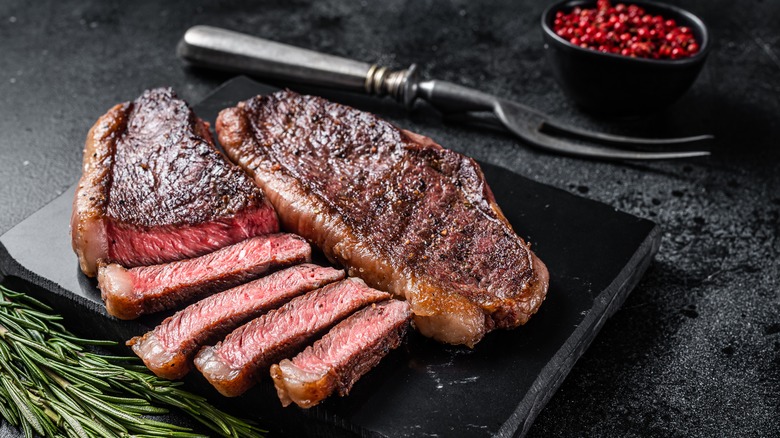Does Flipping A Steak With A Fork Cause It To Lose Juices?
Every steak requires a good flipping, as you'll want that brown crust on both sides. However, many assume that stabbing it with a fork releases all those precious juices, backtracking your progress of tenderizing beforehand. Could this be one big beefy myth?
To a certain extent, using a fork does release some juice, but we're talking about a minuscule amount. In fact, according to Serious Eats, it's such a small amount that it goes undetected by the human mouth. Likewise, many think a steak resembles a water balloon, releasing all its juices when "popped," but this is simply untrue. A steak is actually made up of tiny water balloons jam-packed into batches. When poking, sure, a few of those tiny balloons will burst, but it will more likely push them around instead of combusting them. It would be like dropping a needle into an Olympic-sized swimming pool full of water balloons. You might pop a few, but you won't even realize when they're gone, says Serious Eats.
Furthermore, Life Hacker states that The Food Lab's J Kenji Lopez-Alt dives even deeper, comparing this method to a Jaccard meat tenderizer, which pokes dozens of holes into a steak with tiny prongs, pulling at the muscle fibrils without rupturing a lot of them. A fork is not the enemy if that tenderizes instead of releasing all the good juices from a steak. Kenji's advice is to not stab your steak repeatedly with the fork. Simply prick and flip.
Other debunked steak myths
Now that the fork-flipping myth is cracked, what are some other tall tales about cooking steak? Have you heard that bringing a steak to room temperature will allow it to cook evenly? Well, Serious Eats conducted an experiment, cutting a 15-ounce New York strip in half, letting one side come to room temperature while the other stayed chilled. The side sitting out took over two hours to come to a reasonable internal temperature, compared to what most sites say, which is 30 minutes. After cooking both, they each came to the desired internal temperature around the same time, with both showing even cooking.
Another interesting myth is that bone-in meat has more flavor than boneless. The nitty gritty theory behind this is that bones have flavorful compounds that transfer into the meat when heated. Serious Eats tested this by cooking one bone-in steak, one with the bone removed but tied to the side, and one with the bone removed and tied to the side with a layer of foil in between. After cooking, they cut the meat up and served it to a crowd. The crowd couldn't taste a difference in any of the meat. So while it's not to say that the bone isn't a great addition to a steak, as the meat around it is tender and juicy, and it quite frankly just looks cool, the science-y statement that flavor permeates into the meat is false from a taste-test standpoint.

